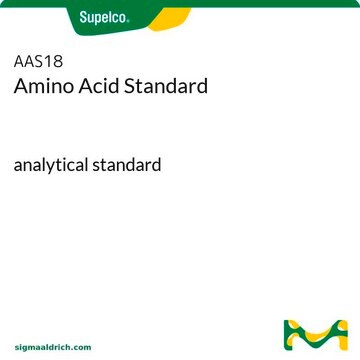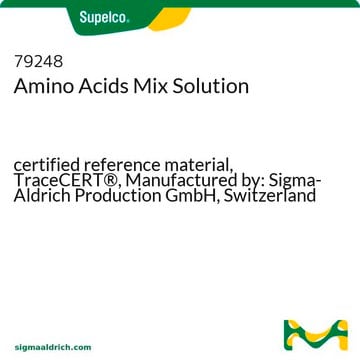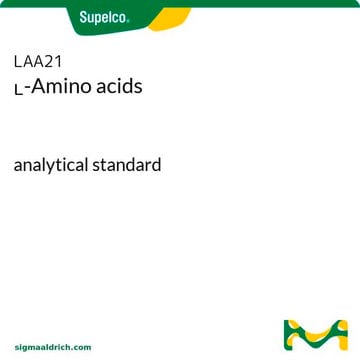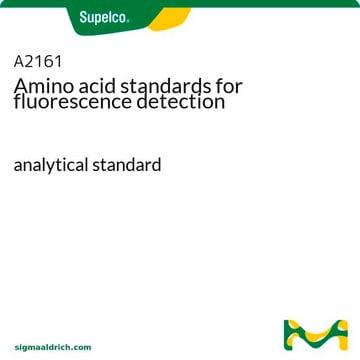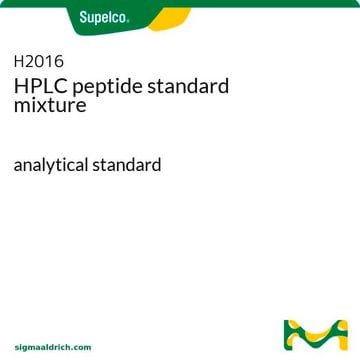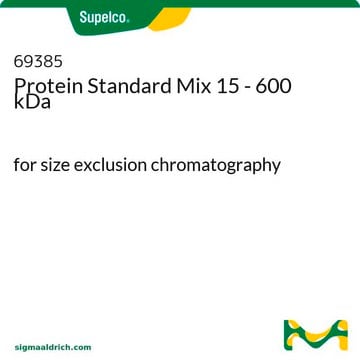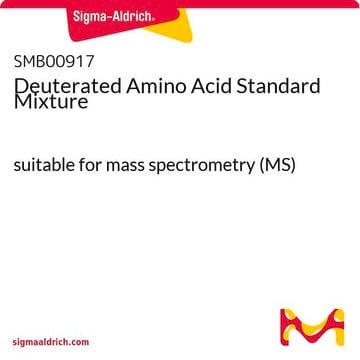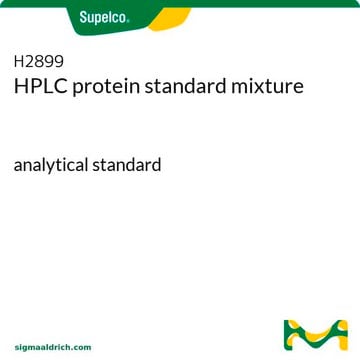If this product has an expiration or retest date, it will be shown on the Certificate of Analysis (COA, CofA). If there is no retest or expiration date listed on the product's COA, we do not have suitable stability data to determine a shelf life. For these products, the only date on the COA will be the release date; a retest, expiration, or use-by-date will not be displayed.
For all products, we recommend handling per defined conditions as printed in our product literature and website product descriptions. We recommend that products should be routinely inspected by customers to ensure they perform as expected.
For products without retest or expiration dates, our standard warranty of 1 year from the date of shipment is applicable.
For more information, please refer to the Product Dating Information document: https://www.sigmaaldrich.com/deepweb/assets/sigmaaldrich/marketing/global/documents/449/386/product-dating-information-mk.pdf
A9781
Amino acid standards for protein hydrolysates
analytical standard
Sélectionner une taille de conditionnement
163,00 €
Sélectionner une taille de conditionnement
About This Item
163,00 €
Produits recommandés
Qualité
analytical standard
Composition
L-Alanine
Ammonium chloride
L-Arginine
L-Aspartic acid
L-Cystine
L-Glutamic acid
Glycine
L-Histidine
L-Isoleucine
L-Leucine
L-Lysine
L-Methionine
L-Phenylalanine
L-Proline
L-Serine
L-Threonine
L-Tryosine
L-Tryptophan
L-Valine
Classe(s) chimique(s) de l'analyte
amino acids, peptides, proteins
Technique(s)
HPLC: suitable
gas chromatography (GC): suitable
Couleur
colorless
Application(s)
food and beverages
Format
neat
Température de stockage
2-8°C
Catégories apparentées
Application
Autres remarques
Code de la classe de stockage
12 - Non Combustible Liquids
Classe de danger pour l'eau (WGK)
WGK 3
Point d'éclair (°F)
Not applicable
Point d'éclair (°C)
Not applicable
Faites votre choix parmi les versions les plus récentes :
Certificats d'analyse (COA)
Vous ne trouvez pas la bonne version ?
Si vous avez besoin d'une version particulière, vous pouvez rechercher un certificat spécifique par le numéro de lot.
Déjà en possession de ce produit ?
Retrouvez la documentation relative aux produits que vous avez récemment achetés dans la Bibliothèque de documents.
Les clients ont également consulté
-
How can I determine the shelf life / expiration / retest date of this product?
1 answer-
Helpful?
-
-
How is shipping temperature determined? And how is it related to the product storage temperature?
1 answer-
Products may be shipped at a different temperature than the recommended long-term storage temperature. If the product quality is sensitive to short-term exposure to conditions other than the recommended long-term storage, it will be shipped on wet or dry-ice. If the product quality is NOT affected by short-term exposure to conditions other than the recommended long-term storage, it will be shipped at ambient temperature. As shipping routes are configured for minimum transit times, shipping at ambient temperature helps control shipping costs for our customers. For more information, please refer to the Storage and Transport Conditions document: https://www.sigmaaldrich.com/deepweb/assets/sigmaaldrich/marketing/global/documents/316/622/storage-transport-conditions-mk.pdf
Helpful?
-
-
Good afternoon. I am searching for a mixture of aminoacids to built method in HPLC to identify several amino acids. I need to know their concentration in the mixture to construct a calibration curve. Will this the best option? thanks
1 answer-
Amino Acids Mix Solution - 79248-5X2ML is suitable for this application. The COA can be found here, https://www.sigmaaldrich.com/certificates/Graphics/COfAInfo/fluka/pdf/PDF746486.pdf.
Helpful?
-
-
A9781 is it suitable for PDA detector HPLC
1 answer-
Product A9781-5ML is suitable for HPLC analysis. While the analysis of amino acids using a PDA/UV requires a lot of steps, it is still possible and practical. However, most HPLC methods for amino acid quantification uses Mass Spectrometry (MS) or Charged Aerosol Detector (CAD) detectors.
Helpful?
-
Active Filters
Notre équipe de scientifiques dispose d'une expérience dans tous les secteurs de la recherche, notamment en sciences de la vie, science des matériaux, synthèse chimique, chromatographie, analyse et dans de nombreux autres domaines..
Contacter notre Service technique